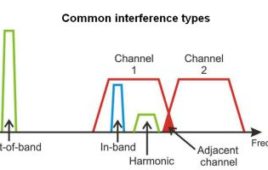Leland Teschler • Executive Editor
[email protected]
On Twitter @ DW_LeeTeschler
Since at least the late 1970s, there have been claims that radio frequency waves are hazardous to human health. Some of the first concerns arose because of RF levels produced by a Pave Paws (Precision Acquisition of Vehicle Entry Phased Array Warning System) installation in Cape Cod. The units operated at between 420 and 450 MHz with a pulse repetition rate of 18.5 Hz. Concerns arose because of a study funded by the FDA. The researchers had exposed cats to low-intensity fields at 450 MHz which were modulated at 16 Hz. The exposure altered the outflow of calcium ions from the cats’ brain tissue. (Things went back to normal once the fields were removed.)
Thus low-intensity RF fields modulated at roughly the same frequency as Pave Paws could change the  physiology of animals. Since then, several studies have looked at health concerns specific to Pave Paws. The conclusions have been that it doesn’t harm humans who stay far enough away to keep field intensity below permissible exposure limits.
physiology of animals. Since then, several studies have looked at health concerns specific to Pave Paws. The conclusions have been that it doesn’t harm humans who stay far enough away to keep field intensity below permissible exposure limits.
Nevertheless, the FDA study made people wonder about human exposure to other kinds of RF. There has been a vocal minority who claim even low-intensity RF causes various medical issues in humans. In recent times, the focus of their concern has shifted from radar and TV towers to cell phones.
It’s possible to find studies of cell phone fields that report adverse effects in animals. One in particular was conducted by the National Toxicology Program of the National Institutes of Health and Public Health Service. Researchers there blasted rats with GSM or CDMA-modulated 900 MHz signals for over 18 hours daily and over periods ranging from weeks to a couple of years. Researchers did indeed note conditions that included weight loss and the development of tumors. The thing to note, however, is that the tests subjected those poor rats to specific absorption rates (SAR) of as high as 9 W/kg, far exceeding the SAR specified for cell phones (1.4 W/kg).
Unfortunately, a cottage industry has sprung up ready to sell fearful people gadgets said to ward off “harmful” electromagnetic fields arising from devices such as cell phones. The purveyors of this stuff will often cite the results of studies like that of the National Toxicology Program while obfuscating the fact that these tests took place in conditions that in no way resemble the real world.
And that brings us to 5G networks now on the drawing boards. These will use much higher frequencies than those of today’s cell phones, up to 60 GHz. 5G millimeter waves don’t penetrate the body as deeply as cell phone frequencies. Where cell phone frequencies have been shown to penetrate three to four inches into the human body, millimeter waves are likely to penetrate no deeper than the skin.
I suspect this fact won’t stop the RF scaremongers. But here’s an additional point to consider: Cell phone use has mushroomed. One might expect to see a rise in the rate of brain tumors if cell phones put out enough RF to cause them. Relax. According to the American Cancer Society 2018 Central Brain Tumor Registry of the U.S., and more recently a study in Australia, the rate of brain tumor occurrences has been flat since the 1990s.
You might call that an inconvenient fact if you are in the RF scare mongering business.
You may also like:
Filed Under: Commentaries • insights • Technical thinking, Wireless • 5G and more, MORE INDUSTRIES, Microcontroller Tips








